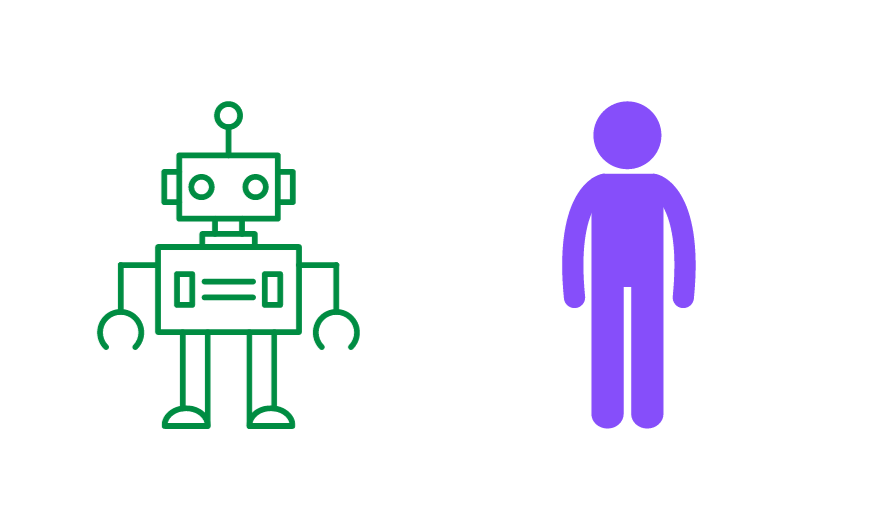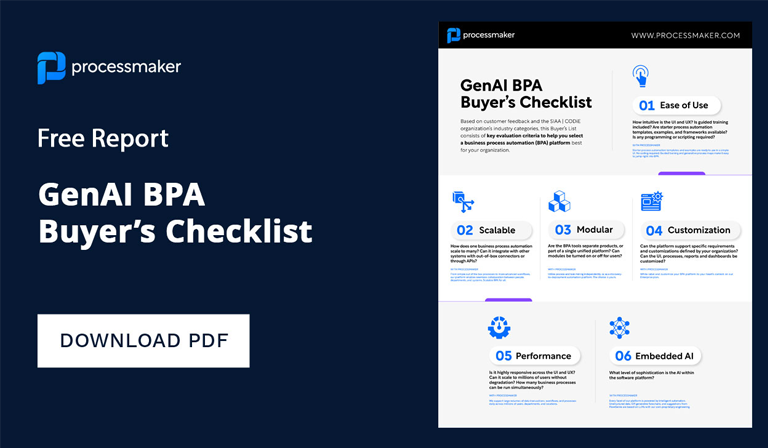Automation and artificial intelligence (AI) promise to speed up planning, reporting, content generation, problem-solving, and more. But there are also common pitfalls to avoid if you want to emerge successful. Here’s the easy blueprint for organizing your AI initiatives, automation software, and practical advice for automation beginners.
How to get started with AI and automation
Artificial intelligence unleashes a bottomless supply of computer science tools into the business world. These generative AI tools are the same types of high-speed data crunchers that identify potential planets beyond our solar system and predict flight costs 300 days from now and are now available in sales, accounting, and marketing. Examples of AI ideas are wide-ranging:

- Answer complex customer questions
- Draft social media captions
- Perform customer research by summarizing frustrations and wants
- Surveil financial activities to detect fraud
- Predict supply chain disruptions
- Spot patterns in large data sets
- Process a large volume of documents and populate a spreadsheet with data points
No matter where in your organization you want to use AI and automation technology, there are four important steps to mapping out your plan. Here’s how to get started with AI:
Step 1: Identify the Right Processes to Automate
The first step in implementing intelligent process automation and AI is identifying the right processes to automate. Businesses should focus on repetitive, rule-based tasks that can be easily automated. This includes data entry, invoice processing, and customer service inquiries. You should prioritize processes that have the potential to deliver the most value, either in terms of cost savings, brand building, or improved customer experiences.
Step 2: Select the Right Tools
Once businesses have identified the processes to automate, the next step is to select the right automation tools. Many tools and platforms are available for hyperautomation and AI, and businesses should evaluate their options carefully before deciding. Factors to consider:
the ease of use, scalability, and integration capabilities of the tool. This includes the level of support and training the vendor offers.

Step 3: Build a Strong Team
Implementing business process automation (BPA) and AI requires a strong team with various skills, including technical expertise, project management, and business acumen. Build a team that includes technical and non-technical stakeholders. Your team should also provide training and support to ensure everyone is on the same page.
For example, AI unlocks lightning-quick problem-solving—but only if staffers know to prompt it for answers. Remember: organizations are prone to following the status quo. Not everyone is as quick on the tech trigger; for some, something new requires a 180° mindset. Find opportunities to train staffers on the advantages of AI until using it becomes habitual.
Step 4: Measure Success
For your tech vanguards—hopping into the world of generative AI is a lot of fun. To ensure that process automation and AI deliver the intended benefits, organizations should establish clear metrics. Discourage shadow AI usage.
To find success, its advantages must be harvested by every employee. Are you looking to reduce costs, boost productivity, or reach a specific NPS score? Focus efforts on key targets and continually track progress along the way.
AI pitfalls to avoid
There are also several common pitfalls that businesses should avoid when implementing workflow automation and AI. These include:
- Over-Automation: Beware the temptation to automate everything; specifically, activities that define your core promise. Your clients value in-person interactions, like tasks that showcase your competitive differentiators. These are just three areas that may not benefit from the promises of AI—and could even risk harm to your reputation or customer satisfaction ratings. Let automation take care of time-consuming tasks, so you can focus on more important matters in real time.
- Obscuring staffer contributions: Top talent sticks around when their contributions are recognized. AI can cloud the tangible connection between input and results. Experts at Stanford University worry that too much reliance on AI and advanced technologies can dwindle motivation—as team members have less ownership over their responsibilities. Encourage team members to explore the reasoning behind AI’s decisions and reward those who unearth errors.

- Underestimating the importance of human input: Don’t forget the importance of including humans in the process, known as humans-in-the-loop automation. Human workers bring unique talents and perspectives that machines can’t replicate, like critical reasoning, soft skills, and intuition.
Additionally, beware of automating so many processes that you rob staffers of valuable on-the-job training. Reducing mundane, repetitive tasks is a plus—as long as you don’t drain roles of the experiences that build lasting talent. AI is meant to aid people, not replace them.
- Amassing technical debt: Without a strategy in mind, AI tools can also amass technical debt, particularly if implemented piecemeal. Intelligent automation initiatives should embrace process orchestration—an automation approach that decrees nothing runs unilaterally. You conduct all workflows, apps, tools, and technologies from one central command center, stopping departments from latching onto ad-hoc AI and accumulating more tools than they can manage.
Combining process automation and AI generate for Hyper-Productivity
Combining process automation and AI represents a powerful synergy that supercharges Hyper-Poductivity in the workplace. Process automation efficiently handles repetitive and rule-based tasks, ensuring consistency and reducing human error. AI, on the other hand, brings intelligence and adaptability into the equation. By integrating AI into automation, systems can learn and make decisions based on data, context, and patterns. This dynamic duo optimizes processes by continuously refining and adjusting them for maximum efficiency.
Implementing process automation and AI can be a complex undertaking—it might even feel overwhelming at first! However organizing your AI plan, following best practices, and avoiding common pitfalls will set the foundation for your success.
Chat with our experts to learn more about how AI and hyperautomation can transform your business processes.





